Zebra plant varieties are some of the most eye-catching succulents you can bring into your home or garden.
Known for their striped, patterned leaves, these plants combine modern style with easy care, making them a favorite for beginners and collectors alike. With bold textures, striking colors, and unique rosette forms, each type adds a touch of elegance wherever it grows.
These succulents thrive in both indoor and outdoor settings, adapting well to bright light and minimal watering. They not only stand out among green foliage but also bring a calming, natural vibe to your space.
If you’re ready to expand your collection, here are 21 of the most beautiful Zebra Plant varieties you’ll want to try.
#1 Haworthia Enon (Hawothiopsis attenuata ‘Enon’)
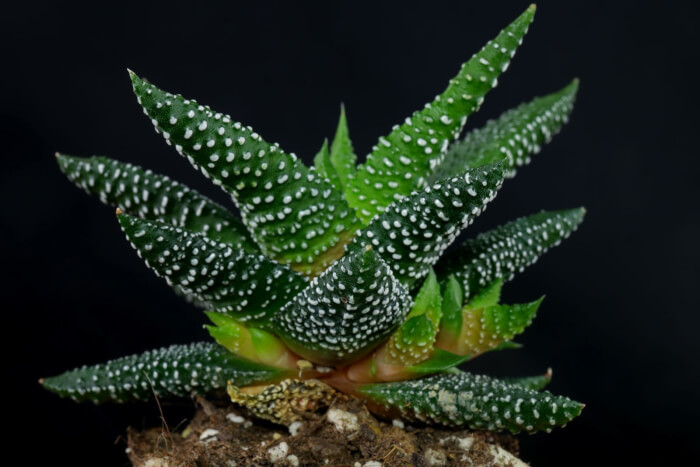
This dwarf succulent forms compact rosettes of plump green leaves that can shift to yellow-red tones when under stress. Raised white spots add a striking contrast.
Place it in bright indirect light for the best colors. Use well-draining soil and water sparingly. It’s a charming choice for small pots or windowsills.
#2 Alba (Haworthia fasciata ‘Alba’)
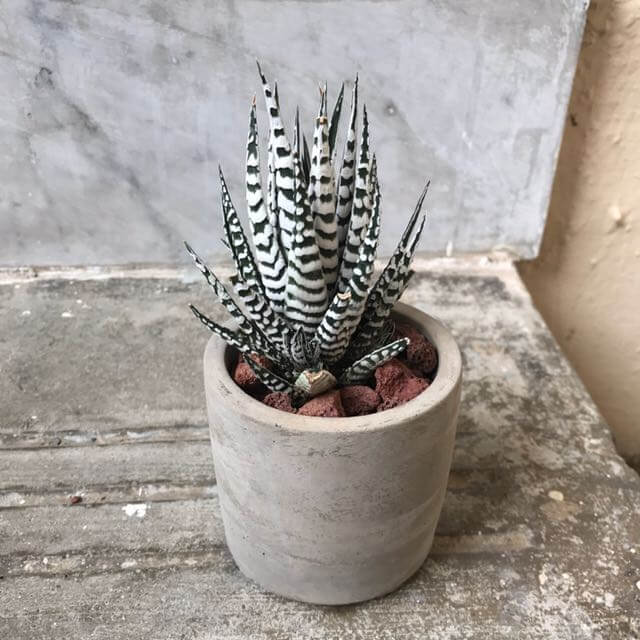
Alba is prized for its bold zebra-like streaks across fleshy green leaves. The wide white bands give it a decorative touch perfect for tabletop displays.
Keep it in a sunny window with indirect light. Water only when the topsoil is dry. Its strong contrast makes it a standout among succulents.
#3 Big Band (Haworthia fasciata ‘Big band’)
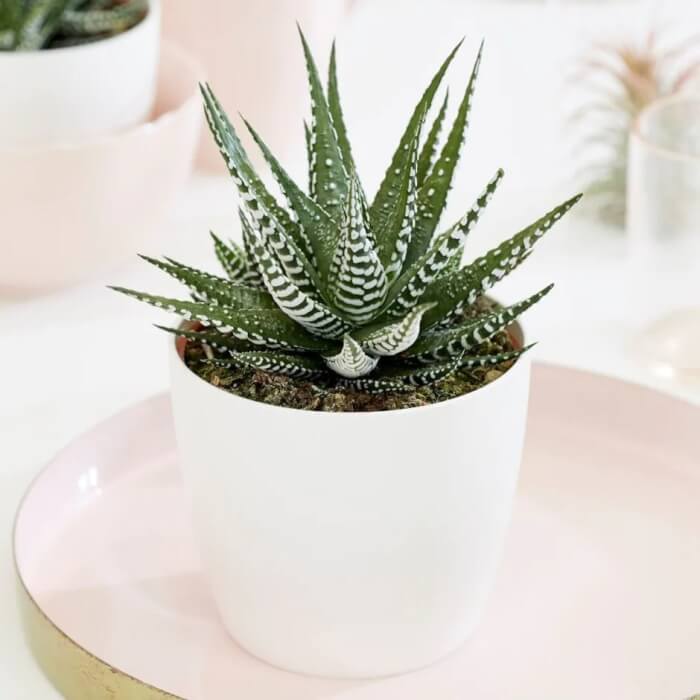
Big Band forms clusters of dark green leaves patterned with wide white stripes. It grows into dense clumps, making it great for pots and succulent arrangements.
Bright light enhances its patterns, while minimal watering keeps it healthy. With time, it creates a striking evergreen display.
#4 Donut (Tulista pumila ‘Donuts’)
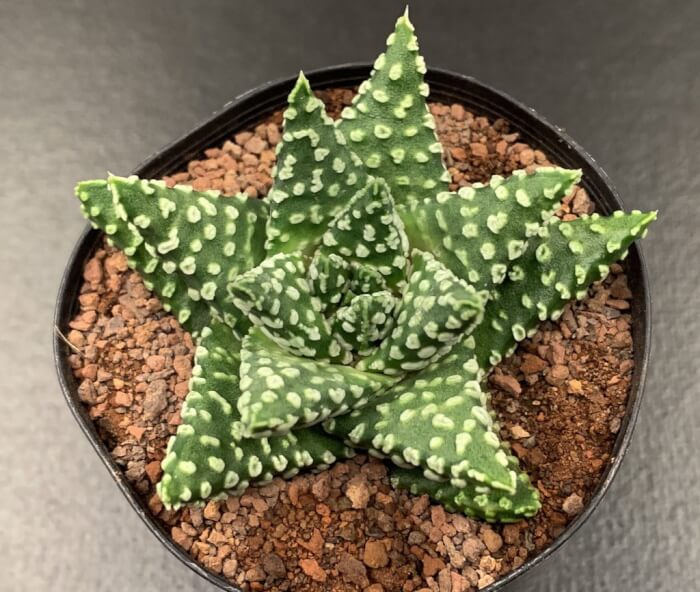
Donut shows upright rosettes of tough green leaves dotted with round, raised tubercles that look like tiny donuts. Its leaves often curve inward, giving it a sculptural form.
Provide full to partial sun for richer textures. Use sandy, fast-draining soil. This variety is especially loved by collectors for its unusual look.
#5 Royal Albert (Haworthia fasciata ‘Royal Albert’)
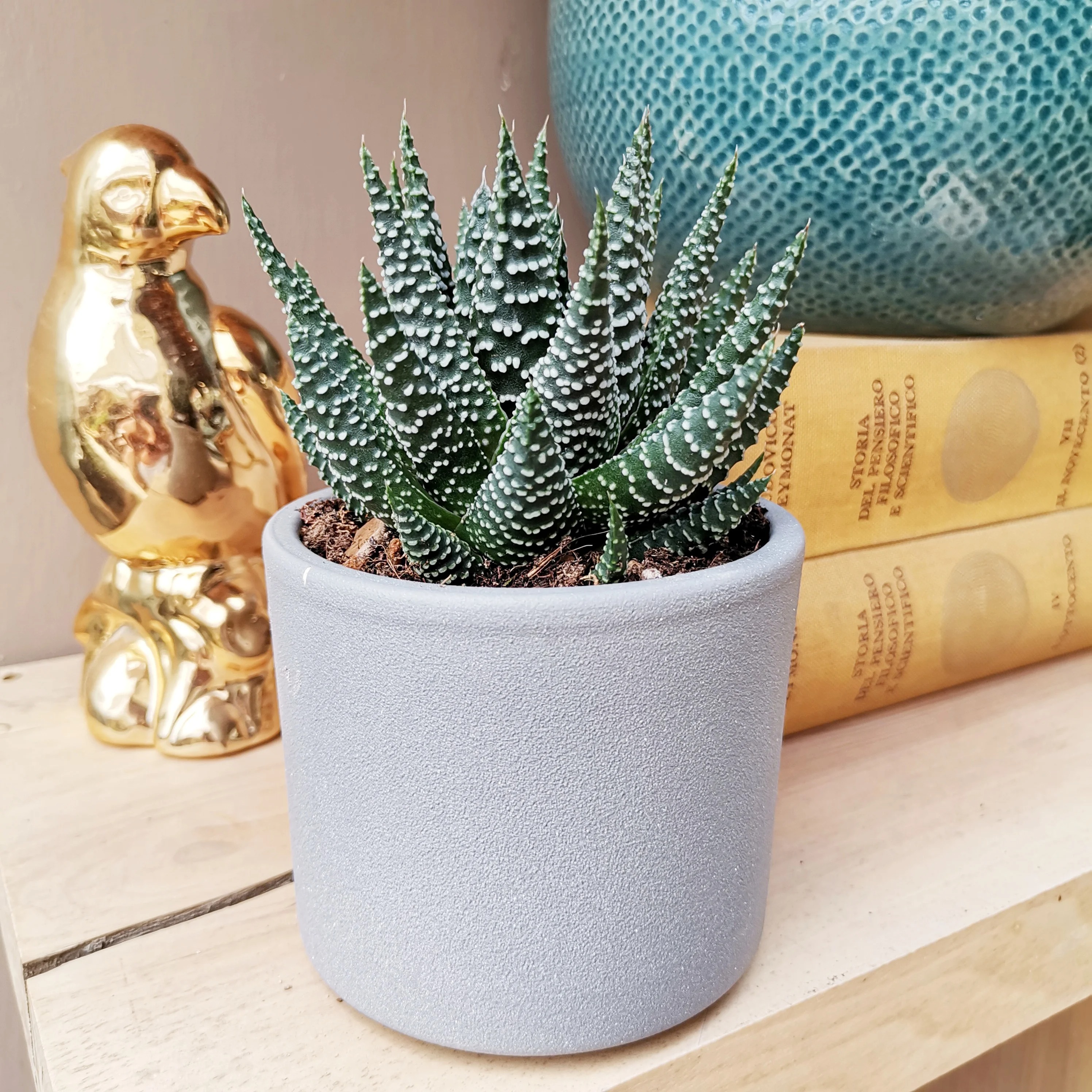
Royal Albert features pointed, black-green leaves covered in raised white tubercles. Over time, it forms clusters that add depth and volume.
Grow it in filtered sunlight and allow soil to dry before watering. Its dark tones give a dramatic touch to any collection.
#6 Hankey Dwarf Aloe (Haworthiopsis attenuata var. radula)
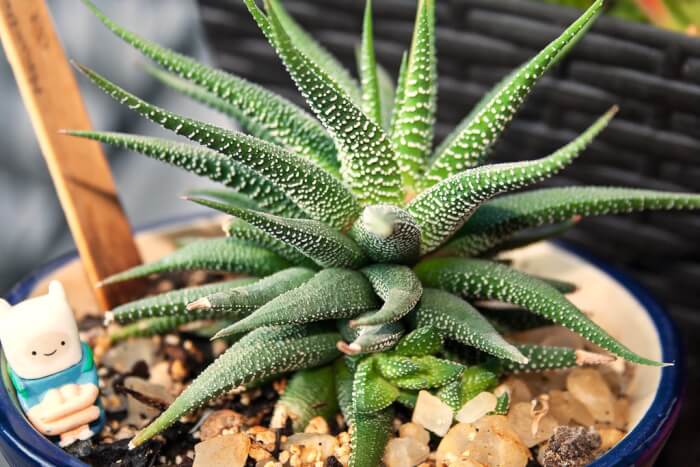
This compact plant produces rosettes of green to brown leaves dotted with white bumps on both sides. It thrives in partial shade and adapts well to containers.
Water lightly and avoid soggy soil. Its textured foliage makes it a lovely accent in mixed succulent pots.
#7 Crosby’s Prolific (Aloe ‘Crosby’s prolific’)
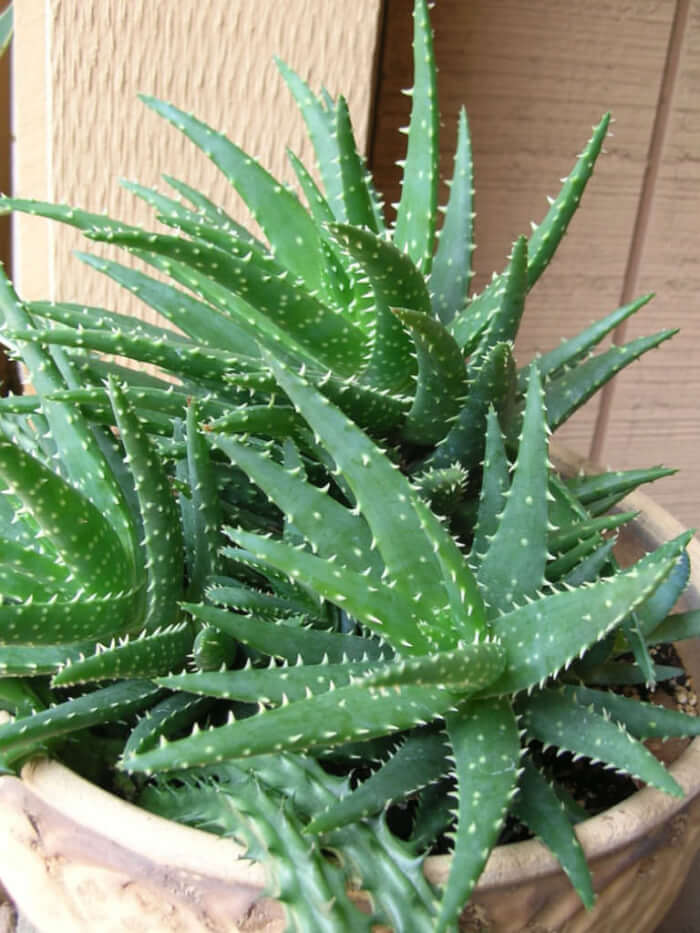
Crosby’s Prolific offers deep green foliage lined with raised white spots and serrated edges. In bright sun, the leaves shift to orange-red.
Plant in sandy soil with good drainage and water monthly. This aloe hybrid brings fiery color when stressed, making it a showstopper.
#8 Emperor (Tulista pumila ‘Emperor’)
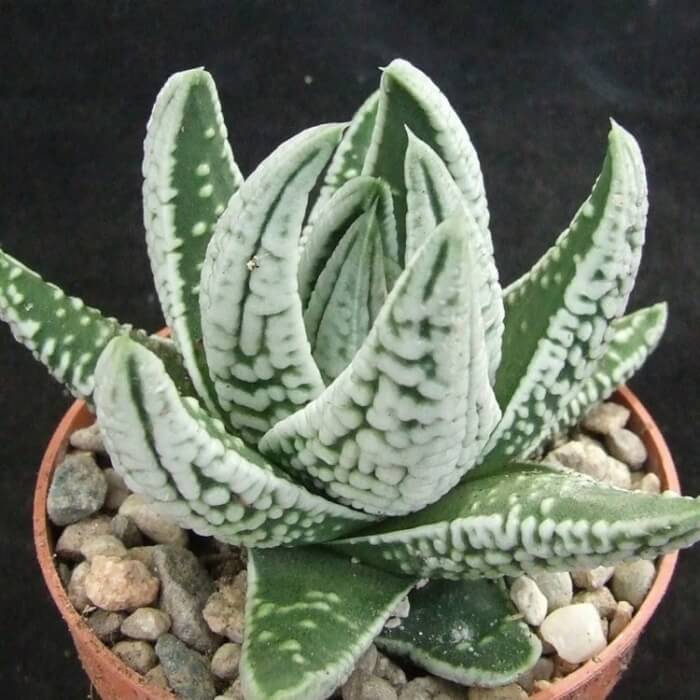
Emperor has long, pointed grey-green leaves heavily dotted with uneven white spots. It grows slowly but becomes striking with age.
Give it full sun for stronger markings. Use gritty soil to prevent root rot. Its bold look makes it an excellent focal point.
#9 Super White Zebra (Haworthia fasciata ‘Super White Zebra’)
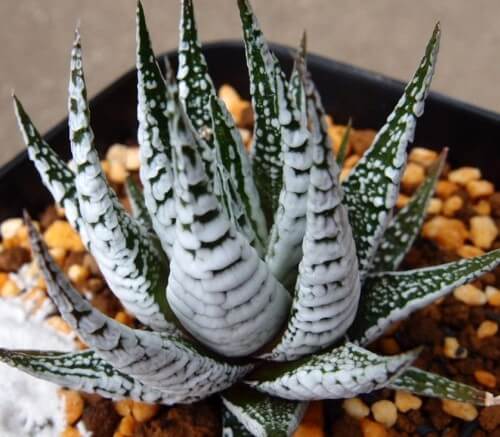
This variety stands out with bright white stripes across thick green leaves. The bold contrast creates a zebra-skin effect.
Place it in bright, indirect light to keep the colors sharp. Water sparingly, as overwatering dulls the markings. It’s one of the most decorative haworthias.
#10 Tears of Angels (Tulista pumila ‘Tenshi no Namida’)
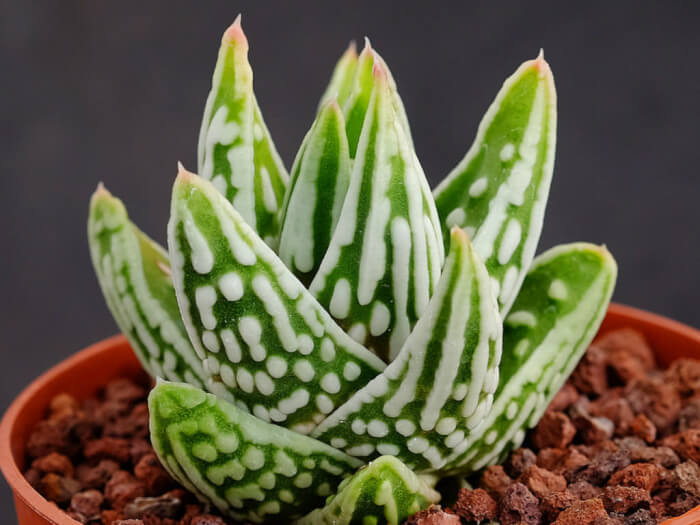
Tears of Angels produces small rosettes with green leaves covered in irregular white bumps. The leaves are upright and curve slightly inward.
Provide a sunny windowsill and occasional watering. Its name and pattern give it a delicate, angelic charm.
#11 Haworthia Glabrata (Haworthia attenuata v. glabrata)
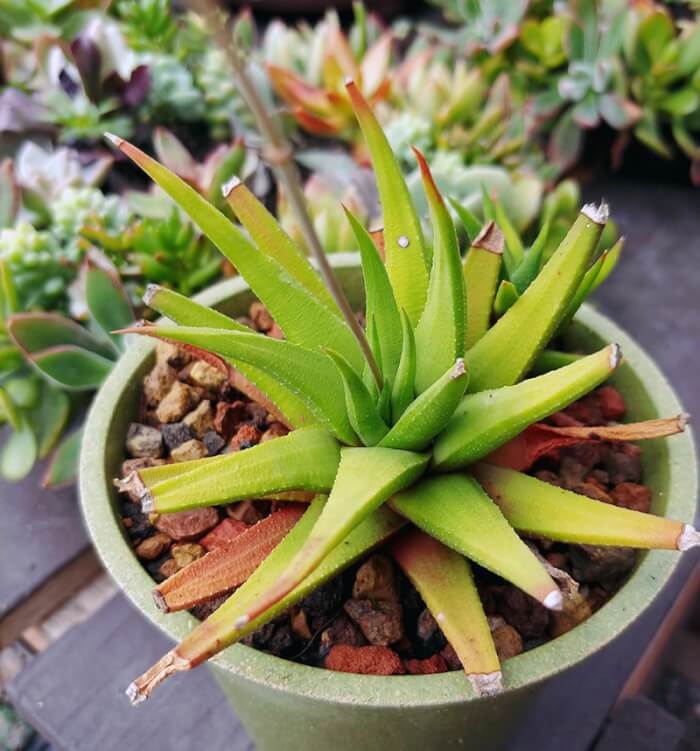
This type forms rosettes of fleshy, narrow leaves in light to dark green tones. Unlike many zebra plants, its bands blend in with the leaf color.
Keep it in filtered light and water lightly. Its subtle patterns make it unique compared to more boldly striped varieties.
#12 Tiger Aloe (Tiger Aloe)
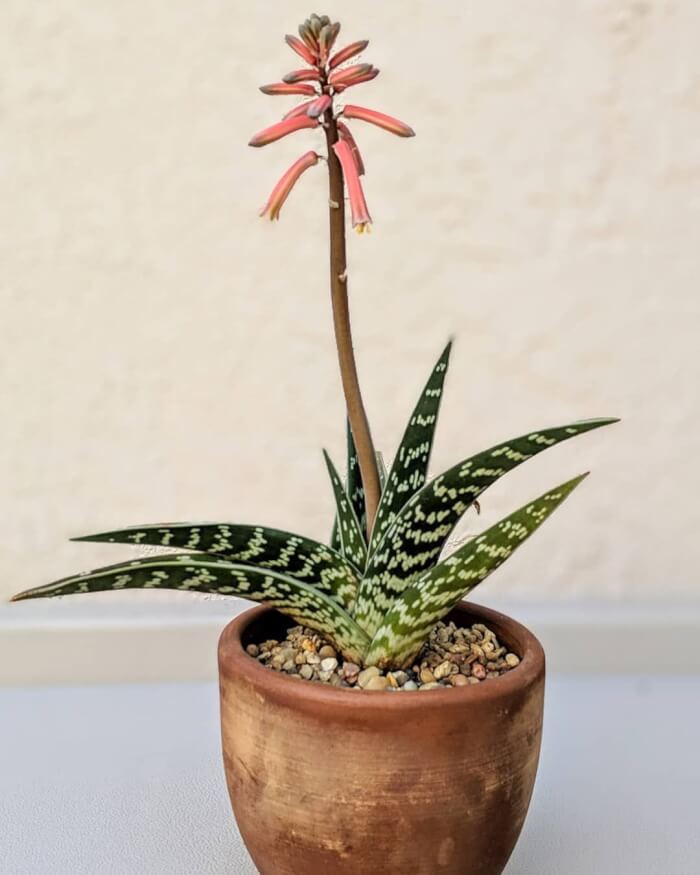
Tiger Aloe showcases small green leaves streaked with creamy white lines. Its compact size makes it perfect for desktops or shelves.
Grow it in sandy soil and water once the soil is dry. Bright light keeps the patterns crisp. This plant is both hardy and decorative.
#13 Coarctata (Haworthia coarctata)
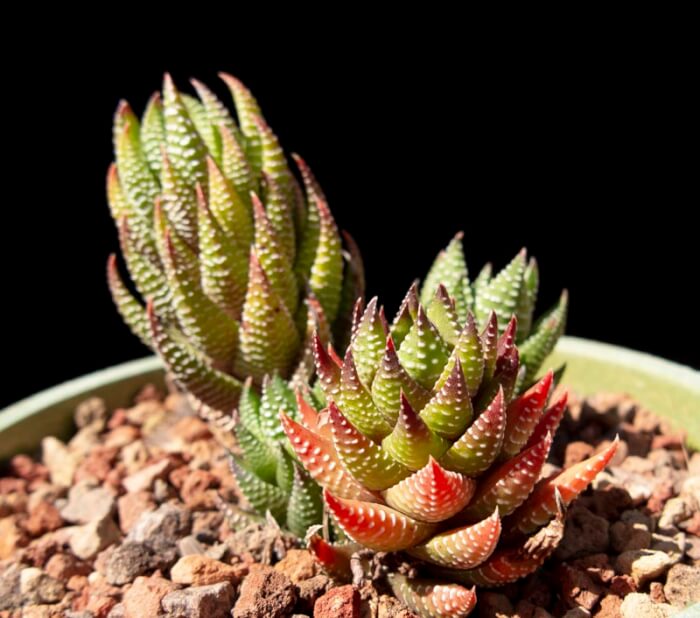
Coarctata produces tall stems packed with stacked, dark green leaves decorated with white ribbing. Over time, it creates dense clumps.
Provide bright light and minimal water. Its columnar growth adds vertical interest to succulent arrangements.
#14 Zebra Plant (Aphelandra squarrosa)
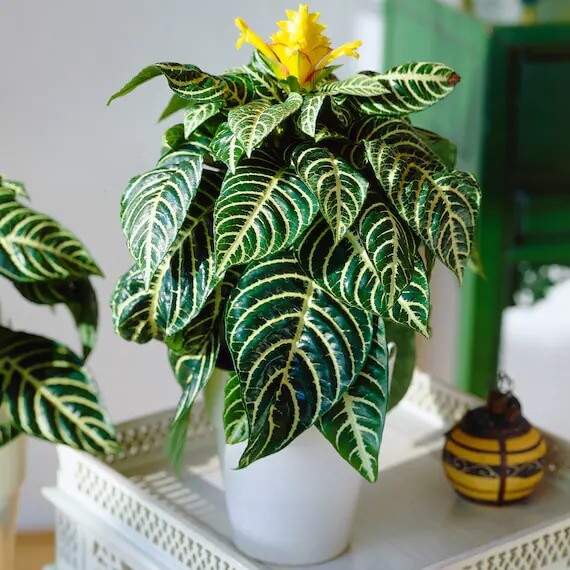
Unlike the succulents, Aphelandra squarrosa is a tropical foliage plant with bold white veins across glossy green leaves. It needs higher humidity and bright, indirect light.
Keep soil evenly moist but not waterlogged. Its exotic leaves make it a stunning indoor display.
#15 Somalian Aloe (Aloe somaliensis)
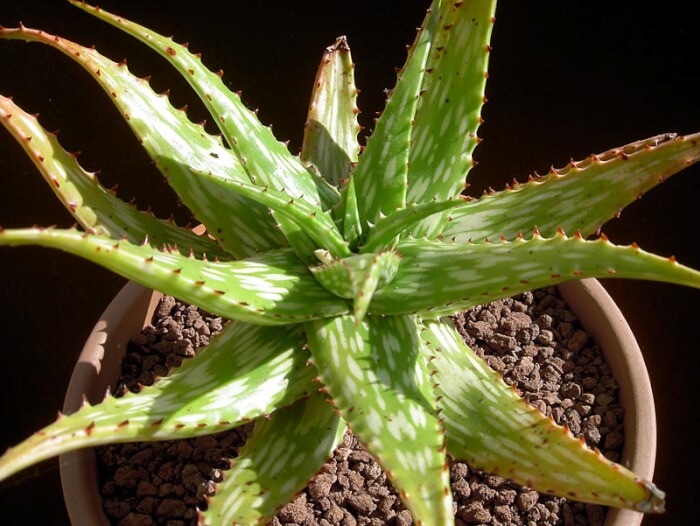
Somalian Aloe grows green leaves patterned with irregular white markings and toothed edges. The foliage may turn reddish under full sun.
Plant it in gritty soil and water sparingly. Its bold foliage makes it excellent for outdoor rock gardens or sunny windows indoors.
#16 Haworthia Radula Variegated (Haworthiopsis attenuata var. radula f. variegata)
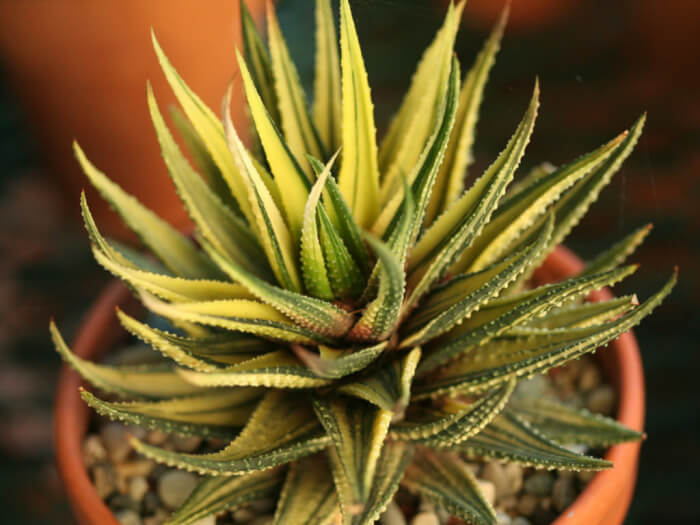
This variegated type produces rosettes with streaks of creamy-white, yellow, or pink among dark green leaves. White bumps decorate both sides of the foliage.
Provide bright light for stronger variegation. Use well-draining soil to keep it thriving. It’s one of the most colorful haworthias.
#17 Lace Aloe (Aloe aristata)
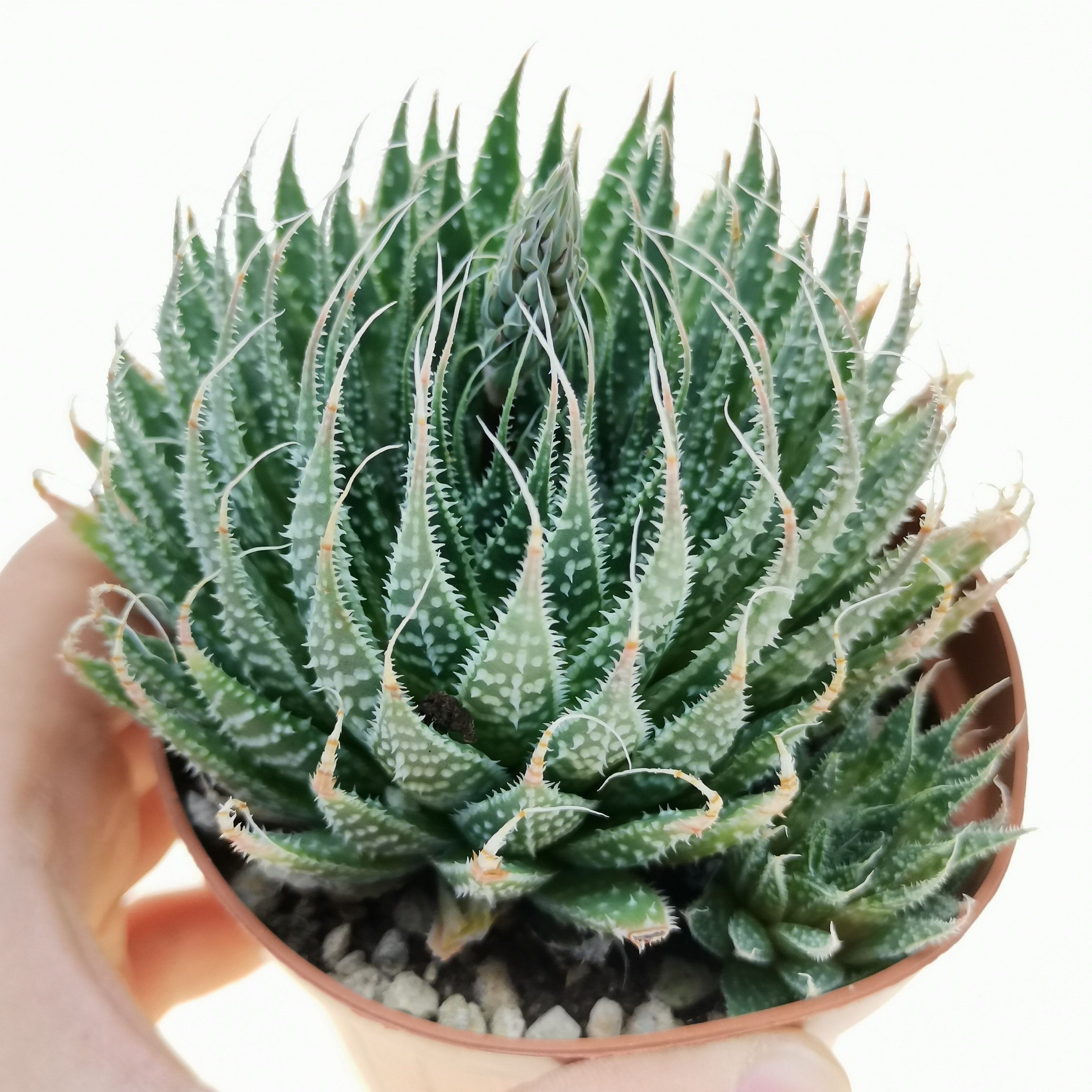
Lace Aloe has spiny-tipped leaves with raised white bumps along their surface. The rosettes are compact and symmetrical, resembling lacework.
Grow it in bright light and sandy soil. Water once the soil dries out. This variety is both hardy and highly ornamental.
#18 Fairy Washboard (Haworthia limifolia f. variegata)
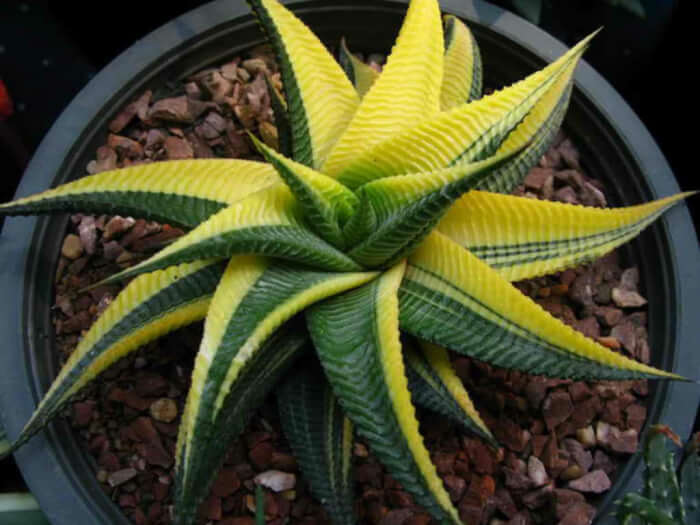
Fairy Washboard features triangular, ridged leaves in shades of green and cream. The rosettes grow slowly but stay compact.
Place it in bright, indirect light and water lightly. Its textured leaves make it a collector’s favorite.
#19 Tulista Breuer (Tulista opalina (M.Hayashi) Breuer)
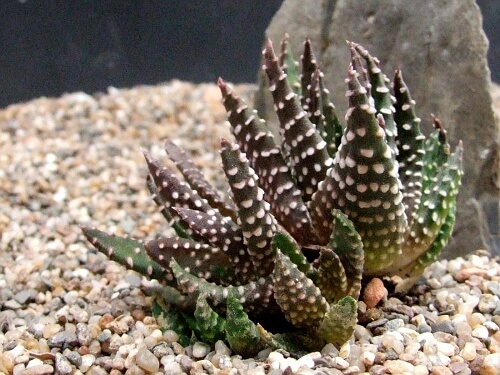
This succulent forms stiff light-green leaves covered with shiny transparent tubercles. The rosettes are dense and firm.
Keep it in bright light and water sparingly. Its glossy textures make it stand out among zebra varieties.
#20 Haworthia limifolia var. striata (Haworthia limifolia var. striata Pilbeam)
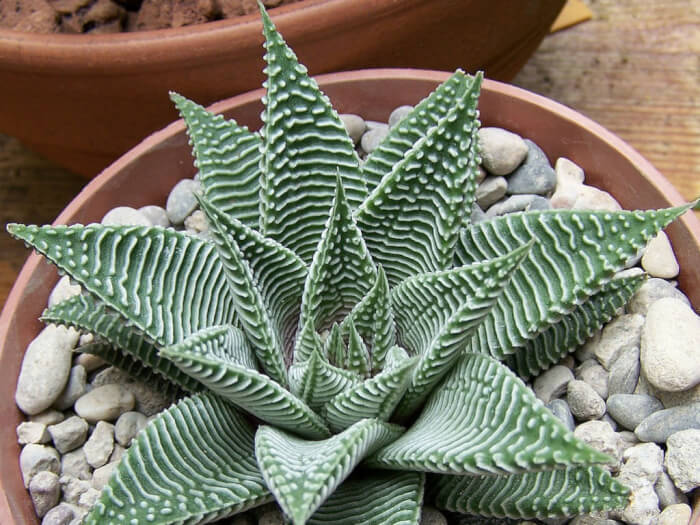
This variety shows deep ribs and grooves highlighted with white tones. Its leaf shape is triangular and symmetrical.
Provide filtered sunlight and water when the soil feels dry. Its sculptural look makes it great for decorative containers.
#21 Haworthia conspicua (Haworthia reinwardtii var conspicua)

Haworthia conspicua produces upright columnar stems covered with dark green leaves dotted with white. In full sun, the foliage shifts to red-brown.
Plant in sandy soil and water sparingly. It’s an attractive choice for windowsills and mixed succulent arrangements.
